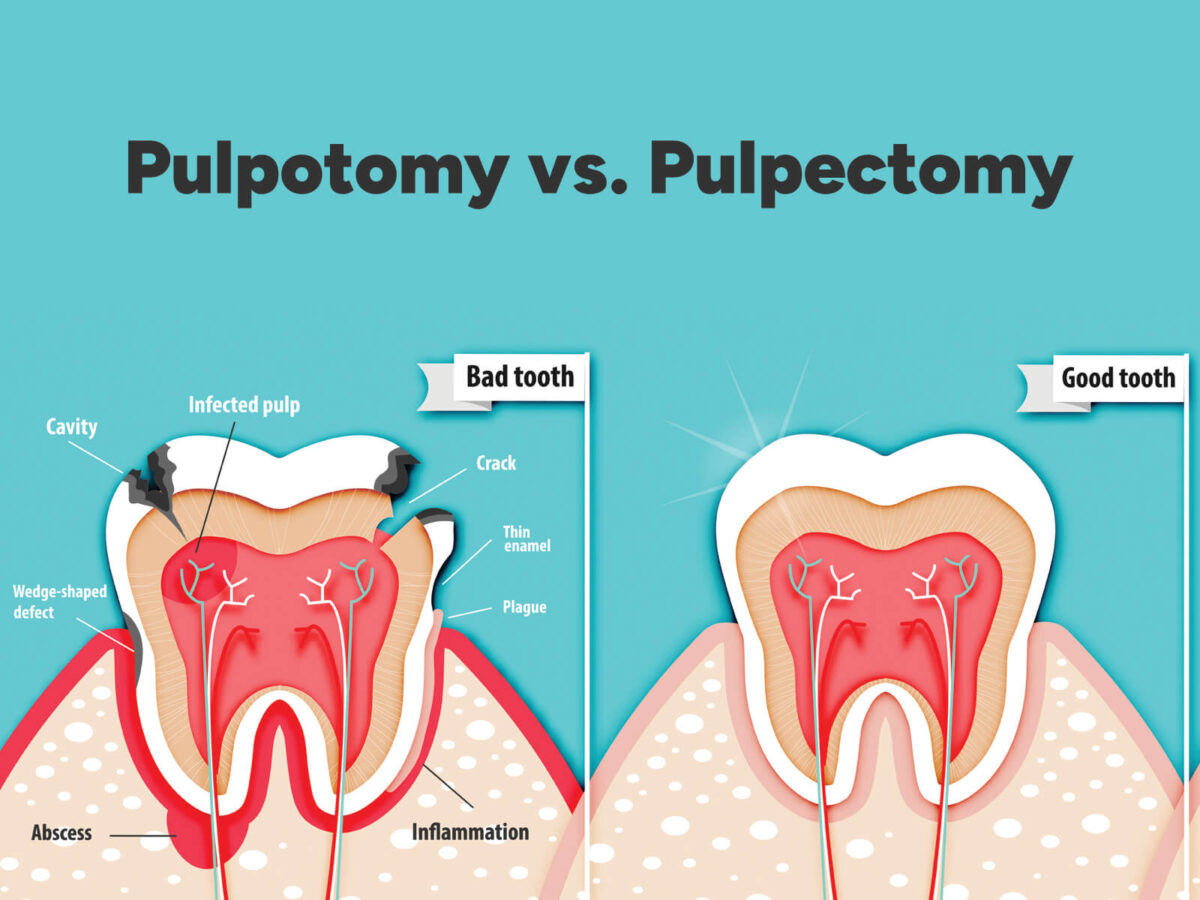Blog
Dental hygiene tips for healthy teeth & gums

Pulpotomy vs. Pulpectomy: Understanding The Difference In Dental Treatments
Pulpotomies and pulpectomies are effective and safe procedures essential to restore a damaged tooth. These procedures are helpful in conditions like tooth decay, infection, and trauma that affect tooth pulp. Both of these treatment plans are quite different from each other.
In this blog, you will learn more about Pulpotomy and Pulpectomy and understand their differences better. This blog will also help you decide on procedures other than root canal treatment that suit your condition and provide the information necessary for such decisions.
Difference between Pulpotomy and Pulpectomy
During a pulpotomy, a dentist removes the coronal pulp, which is the central part above the gumline, from your tooth. These procedures are done on teeth that are alive, respond well to temperature, and have sensations. The results are more favorable if no abscess is present. Otherwise, it can adversely affect the bone and cause excessive pain. These procedures are usually done on baby teeth but are also helpful for permanent teeth in case of cavities or tooth decay.
On the other hand, pulpectomy is a procedure that removes pulp from all parts of the tooth. It is mainly helpful for permanent teeth damaged due to infected pulp and abscesses. This procedure removes the pulp from a tooth and cleans the entire root canal to stop tooth decay. This procedure is helpful for teeth that are no longer alive and don’t have any sensations.
Pulp Procedure
These procedures are helpful for adults and kids with infected pulp. Both processes involve local anesthesia to numb the infected area before removing the pulp. The dentist uses a rubber dam to isolate the infected area from other mouthparts. It is necessary to stop the spread of infection after the pulp procedure.
The dentist checks whether your tooth is alive or not to finalize which type of pulp procedure is suitable. If the tooth has sensation and is active, a pulpotomy is done, which removes only the infected pulp area. Otherwise, pulpectomy removes the infected pulp. After the procedure, you might experience some side effects, including slight discoloration, being fracture-prone, and discomfort in the infected area.
These pain and discomfort become manageable with the help of pain medications and certain precautions. The dentist might also ask you for revisitation after six months for x-rays. These x-ray reports help the dentist track your recovery and can easily monitor your healing process.
Pulpotomy Procedure
The steps in the Pulpotomy procedure are as follows:
- An anesthetic will be applied to the infected gums to numb the area. Once the gums are numb, the local anesthetic will be administered.
- Dentists will use a rubber dam to isolate the tooth and reduce saliva moisture.
- The dentist will use a high-speed and slow-speed handpiece to clean the cavity.
- Then, your coronal pulp will be removed by excavation.
A medicament will then be applied to stop the bleeding. - The chamber will be filled with the suggested material.
This tooth is then covered with a crown.
Pulpectomy Procedure
The steps in the Pulpectomy Procedure are as follows:
- Use of local anesthetic to reduce pain and discomfort.
- A pit will be drilled to access the pulp.
- The pulp is then extracted from the roots.
- The tooth will be cleaned, disinfected, and filled with the specified materials.
- A crown will be placed to cover the tooth.
- The dentist will prescribe antibiotics to decrease the risk of infection.
Final Overview
Pulpotomy and Pulpectomy both involve the removal of the infected pulp. But the tooth remains active and has some sensations in Pulpotomy. In Pulpectomy and root canal treatments, the overall pulp in an infected tooth is cleaned out. Later, in root canal treatment, the cleaned-out pulp area is cleaned and sterilized, and then this area is filled with a specific material and then sealed.
These procedures are essential to stop tooth decay and reduce the risk of abscesses. With proper guidance and regular dental checkups, you can reduce the risk of tooth decay. Good dental hygiene is essential for precaution.


